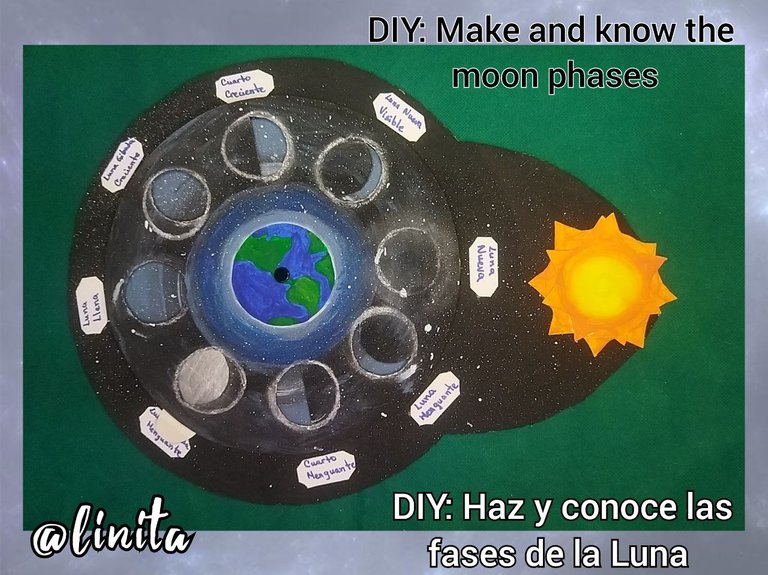
WELCOME TO MY BLOG
Hellooooo, hellooooo! creative community. My entry for this contest is focused on learning the phases of the moon. Many people do not know what they are and it is difficult for us to identify the current phase through direct observation. It is also focused on the creation of models, especially for children in primary education. It is very important that we know the phases of the moon, since different activities of daily life can be carried out through them, especially in agriculture. I hope it will serve as a guide for many. Without further ado let's begin.
BIENVENIDOS A MI BLOG
¡Holaaaaaa, holaaaaa! Comunidad creativa. Mi entrada para este concurso está enfocado en el aprendizaje de las fases de la luna. Muchas personas desconocemos cuáles son y nos cuesta identificar mediante la observación directa la actual. También está enfocado para la creación de maquetas sobre todo para los niños de educación primaria. Es muy importante que conozcamos las fases de la luna, ya que a través de éstas se pueden enfocar diferentes actividades de la vida diaria, sobre todo en la agricultura. Espero que sirva de guía para muchos. Sin más comencemos.
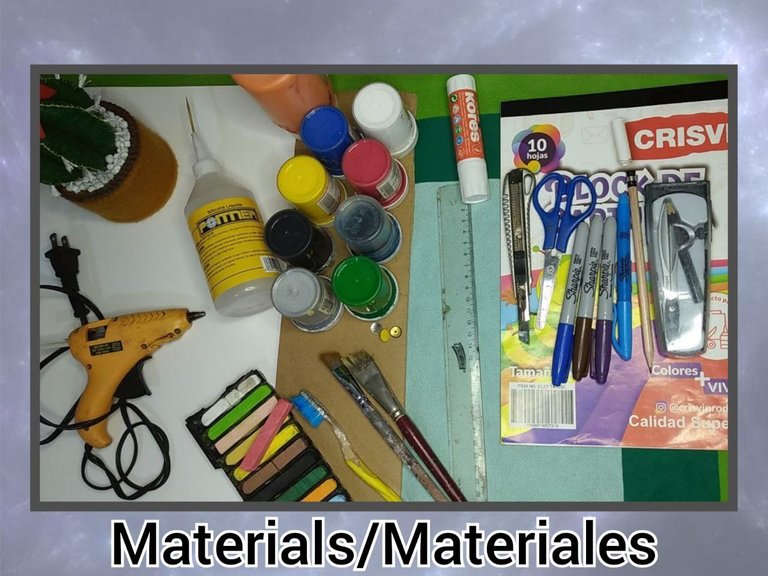
MATERIALS
- Carton box
- Double-sided cardboard
- Cold paints
- silicone
- Brushes
- Compass
- Whiteboard
- Markers
- Pencil
- Cutter
- Scissors
- Ruler
- Bug
- wick thread
MATERIALES
- Caja de cartón
- Cartulina doble faz
- Pinturas al frío
- Silicón
- Pinceles
- Compás
- Tiza
- Marcadores
- Lápiz
- Cortador
- Tijera
- Regla
- Chinche
- Hilo pabilo
STEP BY STEP // PASO A PASO
We make a circle 15 cm in diameter. We draw a 10 cm line and make a tail. We cut with the cutter and scissors.
Realizamos un circulo de 15 cm de diámetro. Trazamos una línea de 10 cm y realizamos una cola. Cortamos con el cortador y la tijera.
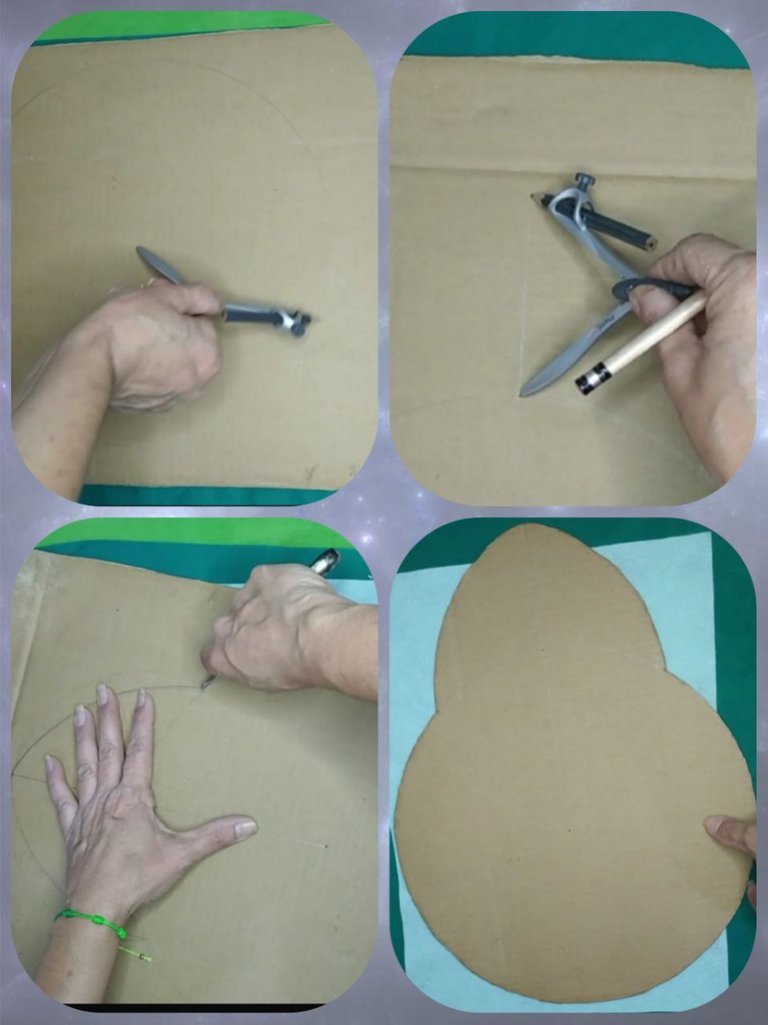
We paint in the color of the milky way or outer space, with the colors black, bluish gray and white. Then we perform splashed with white.
Pintamos de color de la vía láctea o espacio sideral, con los colores negro, gris azulado y blanco. Luego realizamos salpicado con blanco.
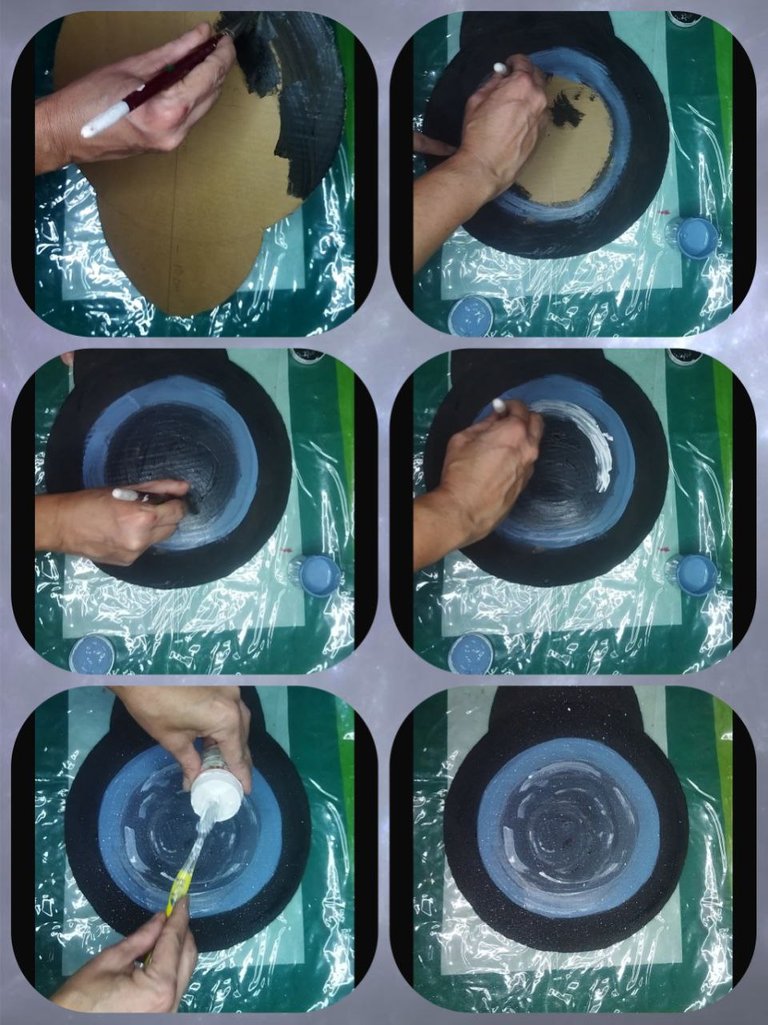
On the double-sided cardboard we make a circle of 12 cm in diameter, then we make 8 perpendicular lines of the same size. We draw a circle of 2 cm in diameter on each line to form the 8 phases of the moon. We cut carefully.
We draw another circle in the central part of 3 cm in diameter to form the earth.
En la cartulina doble faz realizamos una círculo de 12 cm de diámetro, luego realizamos 8 líneas perpendiculares de la misma medida. Trazamos un círculo de 2 cm de diámetro en cada línea para formar las 8 fases de la luna. Cortamos con cuidado.
Trazamos otro círculo en la parte central de 3 cm de diámetro para formar la tierra.
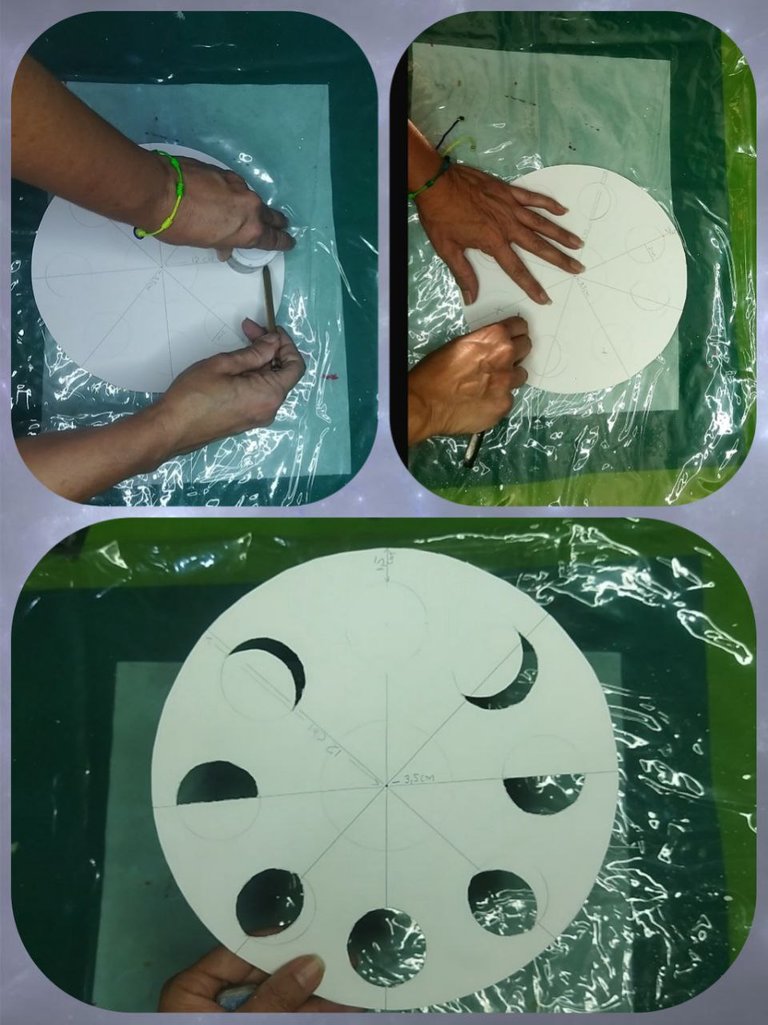
We paint in the central circle, the silhouette of the earth with the blue, green and yellow paints. The rest of the circle equal to the sidereal space. Making a white border around the earth to highlight.
Pintamos en el círculo central, la silueta de la tierra con las pinturas azul, verde y amarillo. El resto del círculo igual al espacio sideral. Realizando un borde blanco alrededor de la tierra para resaltar.
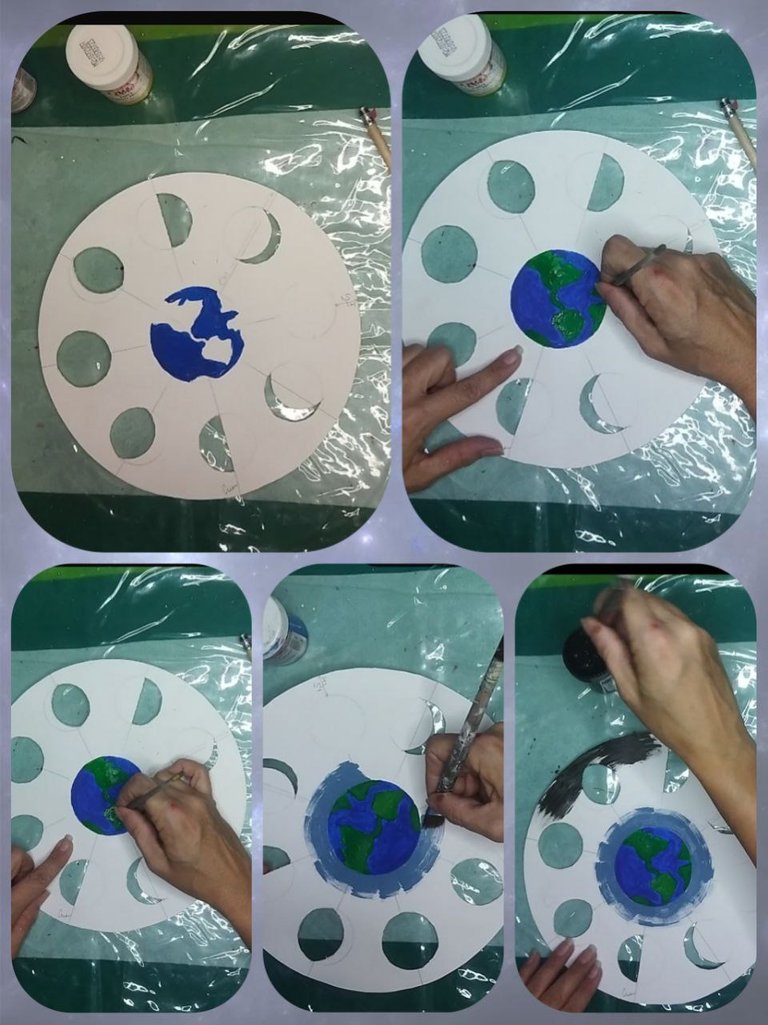
We splashed with white paint and we made shading with the chalk by the contours of the moons.
Salpicamos con pintura blanca y realizamos sombreado con la tiza por los contornos de las lunas.
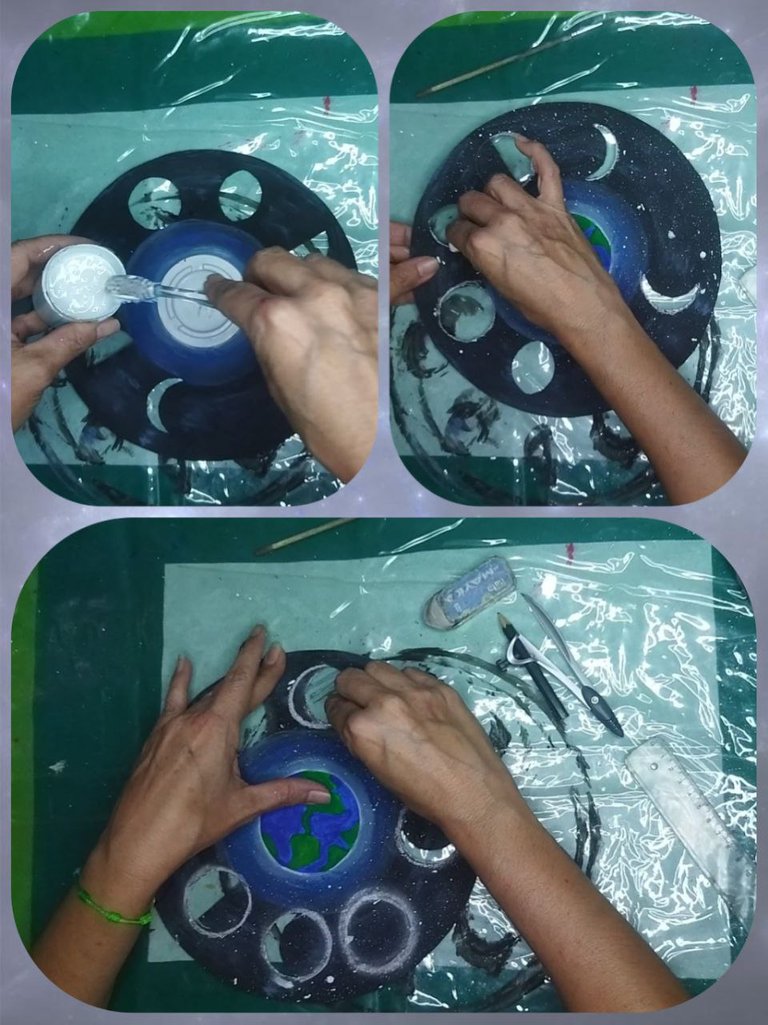
In a cardboard line we make the sun and paint with yellow and orange.
En un trazo de cartón realizamos el sol y pintamos con amarillo y naranja.

To highlight the lunar phases, we will make a kind of lollipop by making a circle 3 cm in diameter. We cut and paint with silver paint and with black shadows.
Para resaltar las fases lunares, haremos un especie de chupeta realizando un círculo de 3 cm de diámetro. Cortamos y pintamos con pintura plateada y con sombras negras.
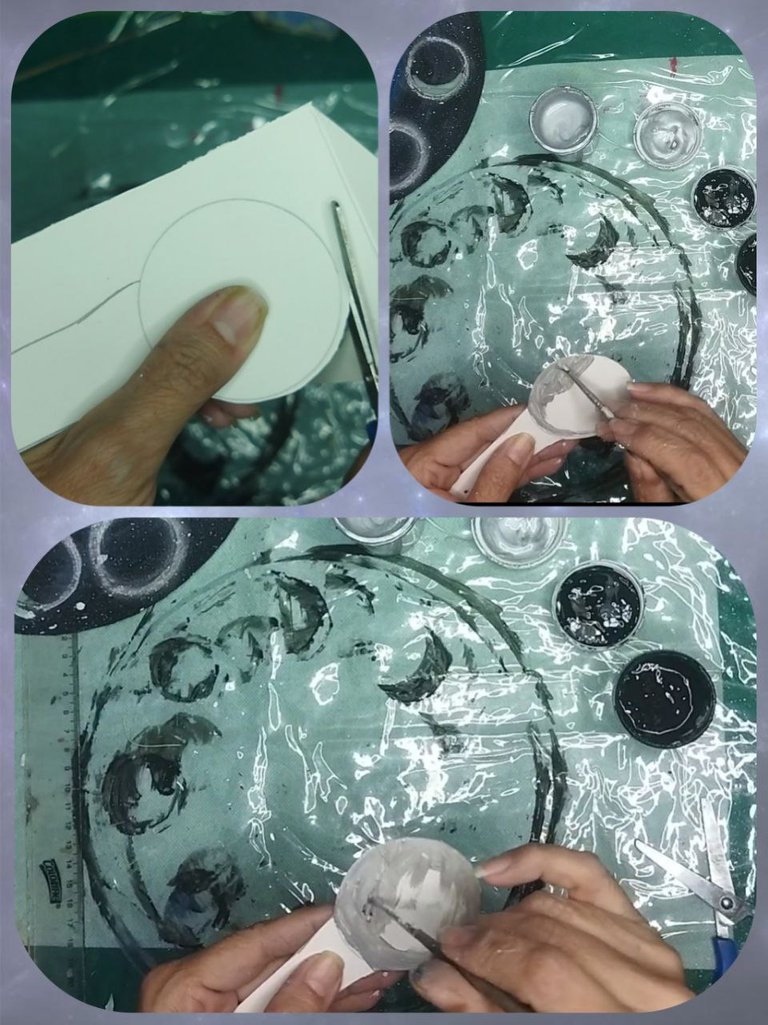
We take the thumbtack that will serve as the base to rotate the moon and glue a piece of wick with silicone. Then we go through the circle of the lunar phases, we introduce the palette of the moon and finally, through outer space.
Tomamos el chinche que nos servirá de base para girar la luna y pegamos un trozo de pabilo con silicón. Luego pasamos por el círculo de las fases lunares, introducimos la paleta de la luna y por último, por el espacio sideral.
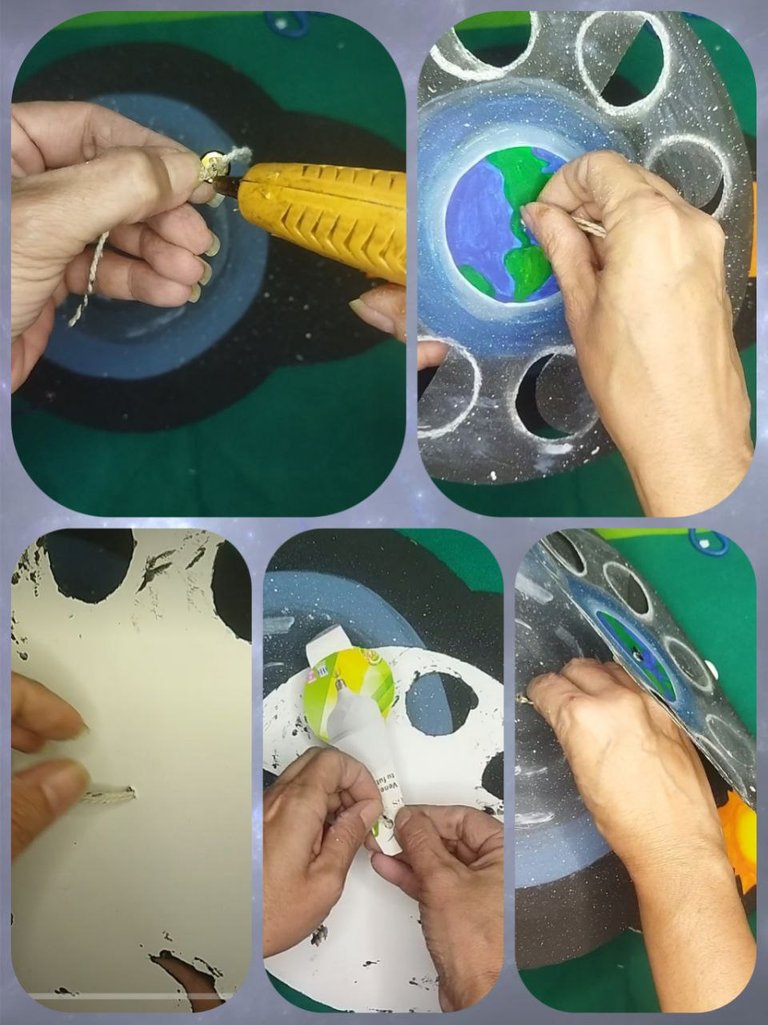
We cut small rectangles to place the names of each of the phases with a marker. We paste in the corresponding one.
Cortamos pequeños rectángulos para colocar los nombres de cada una de las fases con marcador. Pegamos en la que corresponda.
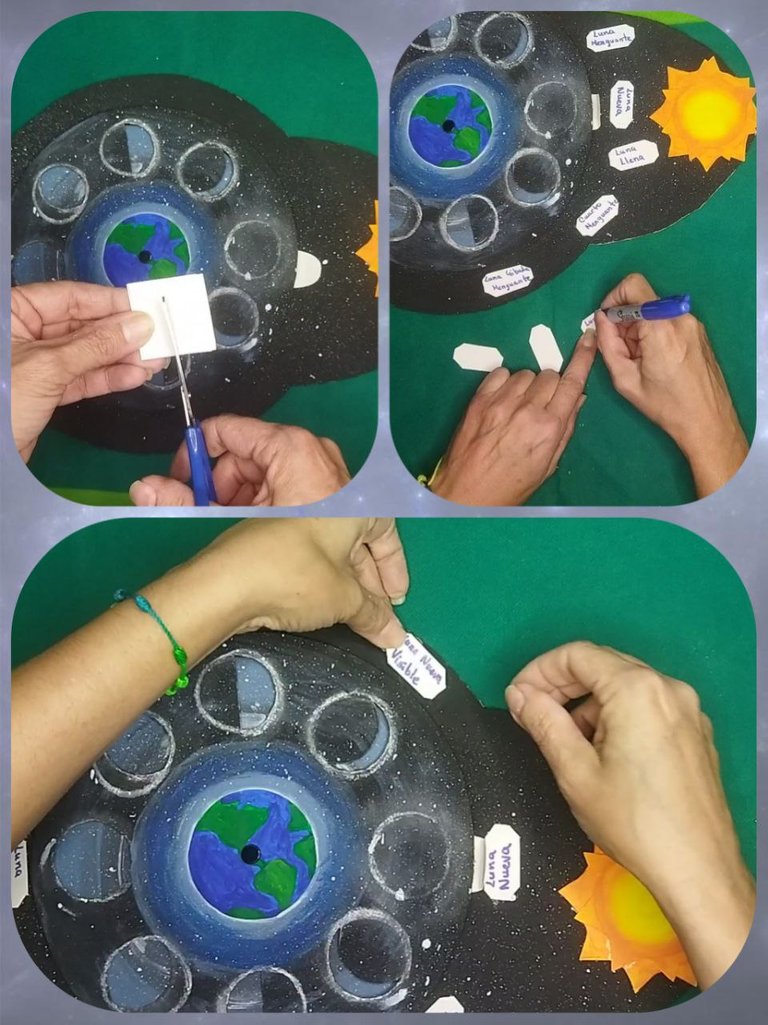
This model will be donated to the "Virgen de Los Desamparados" school located in Areo, Monagas State, so that all children know the lunar phases, including my two nephews who study there. It has been very exciting to do it and a lot of learning because in my years of study I only knew the existence of 4 lunar phases, however, I can also tell you that there is another lunar phase that is not included in this model, called Black Moon Black Moon that corresponds to to the last visible phase of the Moon from Earth, thus beginning, again, another cycle of lunar phases, according to Wikipedia.
Well friends, this is it. hoping it will be very useful for many. See you next time.
Esta maqueta será donada a la escuela "Virgen de Los Desamparados" ubicada en Areo, Estado Monagas, para que todos los niños conozcan las fases lunares, incluyendo a mis dos sobrinos que allí estudian. Ha sido muy emocionante realizarla y de gran aprendizaje porque en mis años de estudio sólo conocía la existencia de 4 fases lunares, sin embargo, también puedo decirles que existe otra fase lunar que no está incluida en esta maqueta, llamada Luna negra Luna negra que corresponde a la última fase visible de la Luna desde la Tierra, comenzando así, de nuevo, otro ciclo de fases lunares, según explica wikipedia.
Bueno amigos, esto es todo. esperando que sea de gran utilidad para muchos. Nos vemos en la próxima.
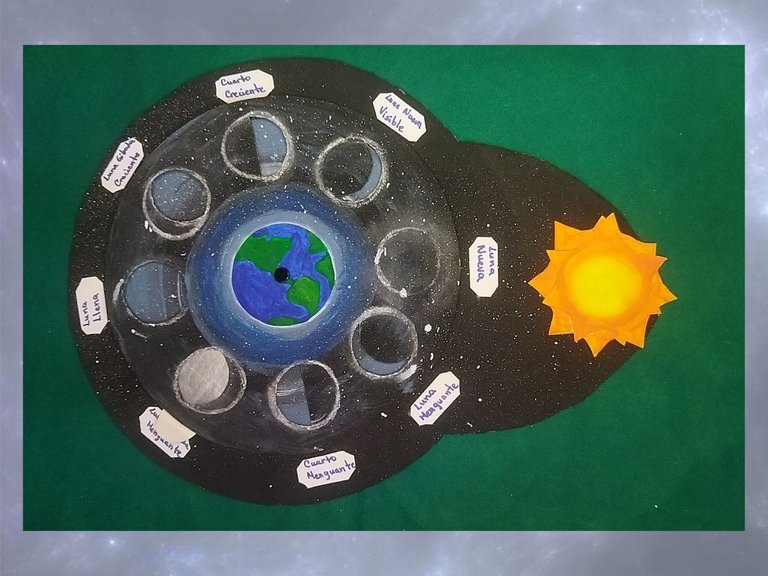
▶️ 3Speak
